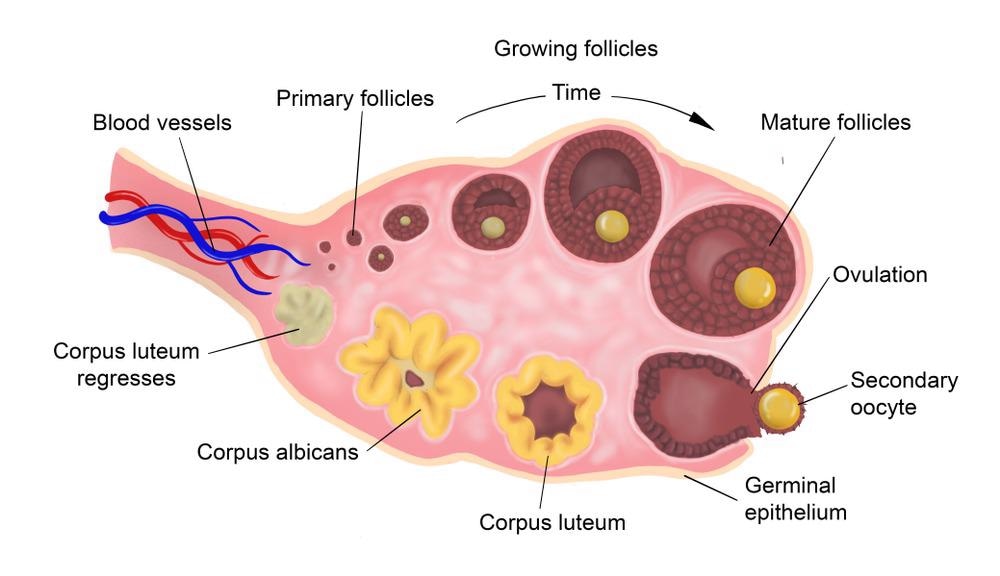Non-steroidal anti-inflammatory drugs (NSAIDs) are drugs used to relieve pain, swelling, fever and other effects of inflammation. These are classified into multiple categories depending on where they act to arrest the inflammatory cascade. Many are available over the counter.

A woman taking non-steroidal anti-inflammatory drugs. Image Credit: engagestock/Shutterstock.com
They are among the most commonly used drugs in the world, with more than 30 million doses being used every day on average. They act by inhibiting the cyclo-oxygenase (COX) enzyme, which is the rate-limiting enzyme in the prostaglandin biosynthetic pathway.
Prostaglandins are key mediators of inflammation. Unlike the concept that a single gene is expressed, encoding a single protein, prostaglandin biosynthesis and metabolism depends on multiple proteins, which must be expressed at appropriate levels, as well as on the location of various enzymes within the cells. In addition, prostaglandin production and breakdown must be coordinated, and the transport of prostaglandins in and out of the cells must be carried out to enable the activity as well as breakdown of prostaglandins.
The prostaglandin-mediated regulation of physiological processes, via their role in cellular activity, is associated with the discovery of multiple off-target effects and adverse reactions from the use of NSAIDs, including cardiovascular events. Another such important area where NSAIDs have been found to mediate essential physiological processes is the female reproductive cycle.
Prostaglandins in ovulation
The COX enzyme exists in two isoforms that are expressed at different levels and in different body tissues, and are regulated by different mechanisms. In animals, COX-1 is expressed at baseline in all tissues and is mainly involved in physiological activities. These include the prostaglandin-mediated protection of the gastrointestinal mucosa against erosions and ulcerations, and kidney function.
COX-2 is expressed at baseline by the central nervous system and the female reproductive system but is also encoded by an early response inflammatory gene, which allows its expression in other tissues when required. It responds to inflammation, labor-associated uterine contractions and other stimuli, to cause disease-linked inflammation.
Both COX-1 and COX-2 are found in the uterine epithelium and may be implicated in ovulation, fertilization and implantation, while in early pregnancy they may help with placental development via vascular growth.
Just before ovulation, a surge in the level of luteinizing hormone (LH) occurs. This hormone regulates ovulation, via its impact on each part of prostaglandin biosynthesis, metabolism and transport within the mature follicle.
Increased prostaglandin E2 (PGE2) concentrations in the follicle drive the expansion of the cumulus oophorus (the cloud of granulosa-theca cells around the developing ovum), switching the expression of the follicular cells to progesterone rather than estrogen. This is accompanied by proteolysis, which causes the epithelium at the apex of the ovarian follicle to break down, with the rupture of the follicle and the release of the ovum.
Effects of NSAIDs on ovulation
In one study, women with minor back pain who were put on three different types of NSAIDs vs a placebo underwent ultrasound assessment to determine if ovulation was occurring. The investigators found that when treated for ten consecutive days, the dominant follicle remained unruptured in between a third to three-quarters of the women on the NSAIDs, depending on which one they took. Conversely, ovulation occurred in all the controls.
The greatest inhibition was produced by diclofenac, where ovulation was reduced by 93%, compared to 75% in those on either naproxen or etoricoxib. The dominant follicle diameter was also reduced in all groups.
Other studies have confirmed these findings. For instance, women who were on long-term treatment with these drugs for severe arthritis, and who were unable to conceive despite extensive testing and treatment, succeeded in conceiving following their withdrawal.

Ovarian cycle. Image Credit: pr_camera/Shutterstock.com
What are the implications?
The mechanism of action in this unexpected but disturbing adverse effect seems to be via prostanoid synthesis inhibition. Recent research suggests that the use of NSAIDs in fertile women could inhibit ovulation by preventing the rupture of the mature ovarian follicle that releases the ovum into the peritoneal cavity near the opening of the uterine tubes.
Prostanoids induced by COX-2 are essential for the rupture of the mature follicle. If rupture does not occur, the mature follicle persists in a luteinized form due to the high levels of luteinizing hormone that occur at the time of ovulation. The result is luteinized unruptured follicle syndrome.
Research is slowly but surely building up to indicate that fertility is impaired in women by the chronic use of powerful NSAIDs, including naproxen, piroxicam and diclofenac. This applies to both COX-1 and COX-2 inhibitors, even though the latter drugs were developed to reduce or avoid the adverse effects of COX-1 inhibitors. Selective COX-1 inhibitors were meant to relieve inflammation without affecting gastric mucosal protection by prostaglandins in the stomach, and similarly in the kidney.
However, the findings that even these drugs may lead to undesirable effects on female reproduction should prompt a complete overhaul of their use in this age and sex group, when used to relieve inflammation in dysmenorrhea or arthritis.
Greater awareness needs to be awakened in this respect, and unexplained infertility may sometimes, at least, be resolved by stopping NSAID use alone. This mandates the use of this recommendation to take a careful drug and medical history, and stop NSAID use, before embarking on expensive and ultimately useless investigations and treatment for infertility in such cases.
Study investigator Professor Sami Salman, Department of Rheumatology, University of Baghdad, Iraq, said, “These findings show that even short-term use of these popular, over-the-counter drugs could have a significant impact on a women's ability to have children. This needs to be better communicated to patients with rheumatic diseases, who may take these drugs on a regular basis with little awareness of the impact.”
Meanwhile, more research is required to confirm the actual frequency of reproductive failure with NSAID use over the long term. Other investigators have concluded that COX-2 inhibitors could be of limited use as monthly contraceptives, unless used along with other prostaglandin synthase inhibitors, or with compounds that inhibit prostaglandin production or transport.
The latter class of agents could enhance the anovulatory effects of NSAIDS. In addition, these compounds may effectively treat uterine disorders in some cases by modulating progesterone levels, thus impacting women’s health favorably.
References
Further Reading
Last Updated: Feb 14, 2022